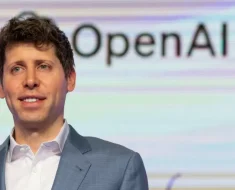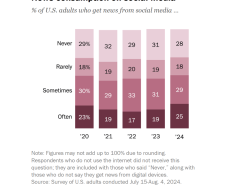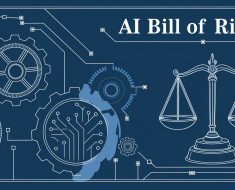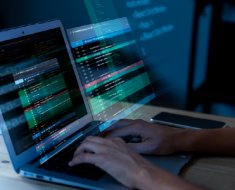AI is the hottest topic on the internet right now, and a huge part of that is controversy. We’re in a gray area where we don’t know if artists whose artwork was used in the training set were plagiarized. This leads people to be, at the very least, cautious about using AI image generators.
That’s why there must be a deep dive into these models’ legitimacy, what’s behind them, and how they might develop in the future. So, let’s start with DALL-E.
DALL-E 3 has been out for a while now, and I’ve been enjoying it a lot as one of my go-to AI image generators for work and personal use. However, I’d have to admit that I sometimes feel like it’s unethical to use it despite its creativity.
There are questions, as I mentioned earlier, and those questions must be answered.
In this article, I’ll be doing a deep dive into DALL-E 3’s trustworthiness and reliability. I’ll talk about its history, perceived longevity, and whether or not it’s ethical to use.
What is DALL-E 3?
DALL-E 3 is the third and current generation of OpenAI’s DALL-E image generator models. It was released in 2023 as an upgrade to DALL-E 2, and like its predecessors, it uses a transformer neural network architecture trained on vast datasets of text-to-image pairs to generate images from text prompts.


This model can generate 1024×1024, 1024×1792, or 1792×1024 images. The biggest improvements of this current generation over DALL-E 2 are better prompt understanding, object permanence, text generation, and creativity.
How Does DALL-E 3 Work?
There are two ways of using DALL-E 3: a paid and a free version. Here’s everything you need to know about how you can use DALL-E 3 with ChatGPT or Bing Create:
Using ChatGPT
Accessing DALL-E 3 with ChatGPT requires a subscription to ChatGPT Plus (hence, why it’s not free). Once you’re subscribed, all you need to do is open ChatGPT and write your image prompt.


What makes this worth the money is that ChatGPT takes it upon itself to tweak your prompt and expand upon it. For example, if I only said, “Can you make me an image of a girl in her dorm room?” Here’s what ChatGPT turns the prompt into:


This is a double-edged sword, of course. On the one hand, ChatGPT’s nuance with DALL-E 3’s prompt understanding is a deadly combo. On the other, it makes it hard to create simple images without ChatGPT adding fluff to the original prompt.
For more information about this method, you can read more about it in our “How To Use DALL-E 3 Inside ChatGPT” article.
Using Bing Create
If you want something simple and free, you can use Bing Create, which uses DALL-E 3 architecture behind the scenes. This method gives you 15 free fast generations daily and unlimited relaxed generations. In my experience, the former has a turnaround time of about 30 seconds, and the latter has about 5 to 10 minutes.


Unlike ChatGPT, Bing Create doesn’t change your prompt. This gives you better control of the final output. The way I’d describe it is this: using DALL-E 3 with Bing Create is like driving a stick, while using it with ChatGPT is like driving automatic.
Is The Company Behind DALL-E 3 Trustworthy?
OpenAI is the company behind DALL-E 3. Not only that, they’re also the ones responsible for ChatGPT and Codex (which powers GitHub Copilot). Because of this, they’ve since become one of the leaders in artificial intelligence research and development in recent years.
They’re generally trustworthy. The people behind OpenAI like Sam Altman and Mira Murati are big proponents of AI regulation and governance. Altman even gave a speech before the US Senate urging them to consider mitigating public AI use. They’re also more strict with their copyright guidelines than other AI image generators like Midjourney and Stable Diffusion.
The Counterpoint – Why They’re Untrustworthy
To play the devil’s advocate, there are several reasons why some people are wary of OpenAI. For one, the leadership debacle last November stripped down the company’s facade. It was made clear that some of the people behind OpenAI are quick to pull the trigger when something goes wrong.
There’s also the issue of transparency. Unlike many other labs, OpenAI doesn’t freely publish its full research or models anymore. The reason behind this, according to Ilya Sutskever, is that “open-sourcing AI is not wise” because it’s “extremely, unbelievably potent.” Some experts counter that OpenAI cannot prove its systems are safe if it doesn’t allow closer inspection.
It goes beyond safety too, copyright infringement is also a concern. Case in point: artists are now fighting back against AI art because they presume their body of work was used as part of a training set. The only issue with that is that we don’t have proof of whether or not they are, especially with popular image generators like DALL-E and Midjourney.
How Reliable Is DALL-E 3?
Prompt Understanding
DALL-E 3 is the best AI image generator for nuance and cohesion. The only other AI model that can compare to it right now is Midjourney V6. It rarely skips over a word in the prompt, no matter how small. The only issue I have with it now is it can’t assign weights to the prompt elements like Midjourney.
A middle-aged woman of Asian descent, her dark hair streaked with silver, appears fractured and splintered, intricately embedded within a sea of broken porcelain. The porcelain glistens with splatter paint patterns in a harmonious blend of glossy and matte blues, greens, oranges, and reds, capturing her dance in a surreal juxtaposition of movement and stillness. Her skin tone, a light hue like the porcelain, adds an almost mystical quality to her form.


A vast landscape made entirely of various meats spreads out before the viewer. tender, succulent hills of roast beef, chicken drumstick trees, bacon rivers, and ham boulders create a surreal, yet appetizing scene. The sky is adorned with pepperoni sun and salami clouds.


Creativity
DALL-E 3 also boasts a significant improvement in creativity over its previous version. It still has that hallmark DALL-E 3 look of waxy, flawless images that sometimes take over realism, but for the most part, it’s been consistent at creating genuinely amazing artwork.
a dark wizard summoning the undead, dark fantasy illustration, lithography, 1980s illustration, gothic dark and macabre, dark green aesthetics
a woman walking in an open field during sunset, sufganiot, byzantine Japanese woodblock scene, in Viennese secession style, gilded, chromatic, whimsical, hanukkah




squidward as a lovecraftian deity
a hokusai painting of mount fuji




a mysterious young blonde woman stands in the foreground, their faces artfully smearing into white noise static and into swirling abstract patterns. glitch art, surreal, ethereal, 90s anime screen grab. the caption reads, “The universe says not yet.”
low resolution 2 megapixel flash photo candid shot low angle perspective 💀 the youth hanging on an empty road listening to music dust chromatic aberration blurry motion blur life in 2005 corrupted digital photo displaced pix




Will DALL-E 3 Last?
The most popular AI image generator today is Midjourney. Their creativity and improved nuance helps propel them above DALL-E and other AI image generators. With an alpha version of their web application already released, Midjourney has a high chance of becoming the standard AI image model for years to come.
Does that mean Midjourney will make DALL-E irrelevant? Not necessarily.
Competition is healthy. Having two AI image generators that are this good and accessible ensures the survival and evolution of both. In my opinion, the only thing that threatens their existence is text-to-video models like Pika Labs since they have a lot of overlap (hobbyists, mostly) with the text-to-image community.
So, to answer the question, no. DALL-E 3 won’t last but newer versions of DALL-E can. Only time (and OpenAI) can tell how good DALL-E 4 will be.
DALL-E 3 Alternatives
Midjourney
Midjourney is an AI-powered text-to-image generation model. It allows users to create images and artworks by describing what they want in natural language prompts. Like DALL-E, Midjourney utilizes deep learning and neural networks to generate images based on the text descriptions.


Some of Midjourney’s biggest weaknesses stem from its platform, or rather, the lack of one. However, they finally rolled out an alpha version of their web application. We still have no idea on when a beta version available to all will be released, but safe to say that it’s coming soon.
















Adobe Firefly 2
Like DALL-E and Midjourney, Adobe Firefly 2 is an AI image generator that can create images and artworks in just a few seconds. This model can be used directly with other Adobe products such as Photoshop, InDesign, and Premiere.
















The Bottom Line
So, is DALL-E 3 legit? Absolutely.
More than its features and creativity, DALL-E 3’s credibility is helped by the reputation of the company behind it. OpenAI might’ve had its fair share of controversies in the past year, but overall, they’ve still brought more good than harm.
The most important thing is that DALL-E 3 comes from a reputable source, with a proven track record in AI research and development. While no technology is perfect, OpenAI has demonstrated a commitment to developing AI responsibly and addressing concerns around bias, safety, and misuse.
With the proper oversight and safeguards in place, DALL-E 3 has incredible potential as a creative tool. Of course, we have to ensure it is used ethically. But the technology itself is groundbreaking and illustrates how far AI has come.
Before you go, if you’re interested in learning more about DALL-E 3, you can read our full review of the product here.





